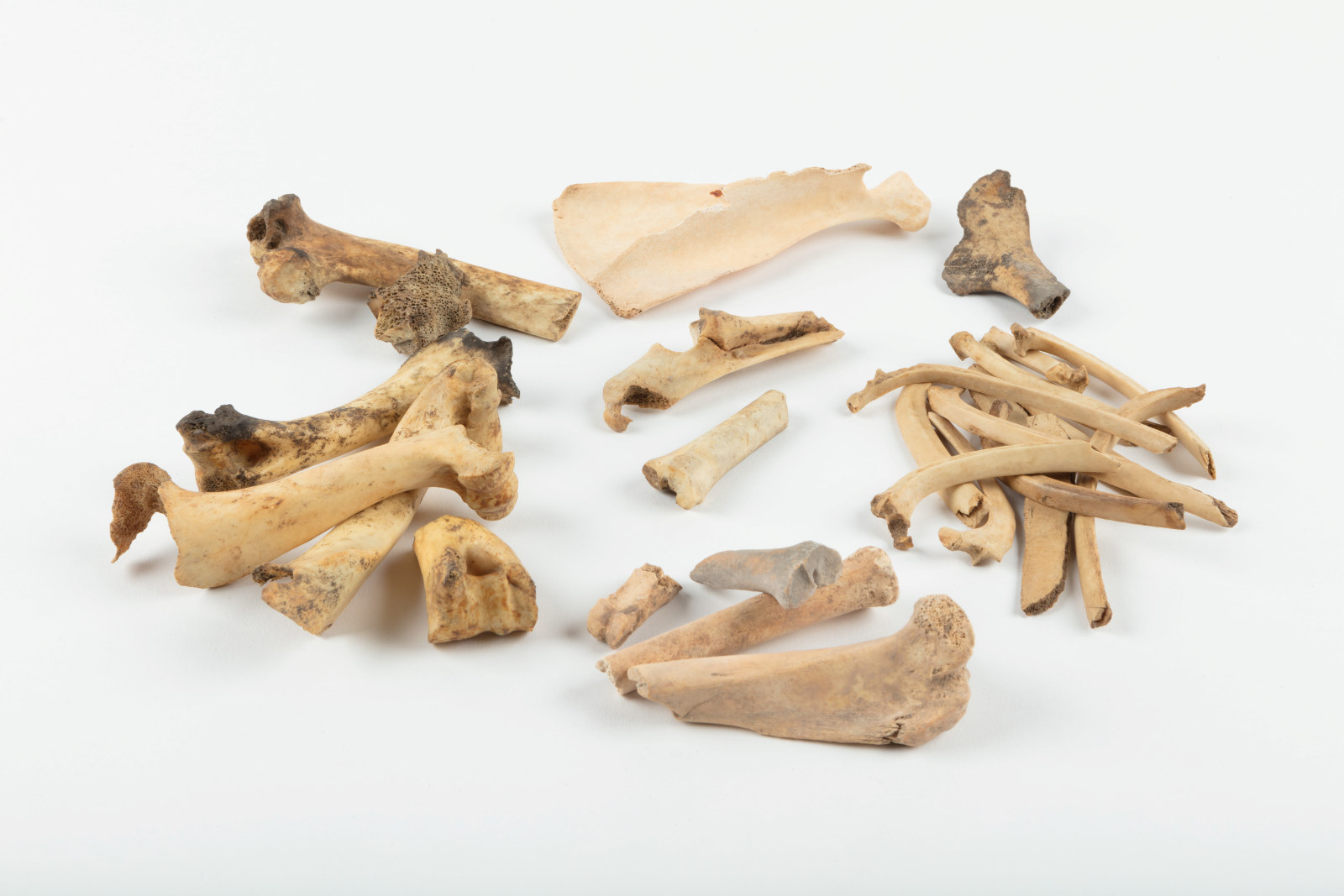What food did the convicts eat?

In 1820, the convicts living at the Hyde Park Barracks would have been woken at sunrise by the ringing of a bell in the yard.
They got out of their hammocks, went downstairs and were given breakfast – a salty meat stew sometimes with a few vegetables like cabbage, onion, potato and turnip.
The stew was cooked in a large pot that could hold 280 litres, and each man was served the same amount of meat, 227 grams (half a pound). They were also given bread. The men sat together in groups of six (known as ‘messes’), and one man had the job of giving out the food and making sure every man got the same amount.
The Deputy Superintendent would keep a close eye on the men preparing the food to make sure it was properly cooked and that each convict was given the correct amount. Later in the day, the men were given more food to eat.
By 1826, convicts at the barracks were eating something different for breakfast – a plain-tasting porridge called ‘hominy’. It was made from corn and was boiled over a fire.
Convicts called their midday meal 'dinner’, and they often returned from their worksites to eat it at 1pm. It was usually 450 grams of salted meat (either mutton or beef), cooked again into a stew, and some bread.
By 1826, the government also had a more established cattle stock available and so the meat served to convicts was fresher and taken from better-quality cuts than before.
Convicts who worked far away from the Barracks had their meals carried out to the worksites on carts. Convicts only had two meals per day; as ‘dinner’ was their last meal, they kept some of their bread to eat later.
The Barracks had a bakery, which was always busy making bread for the convicts to eat. However, sometimes it could not make enough and bread was also purchased for the convicts from bakers in the town.
The bread was often stale and hard by the time the men were given it, so some refused to eat it. In February 1826, a convict named Thomas Haynes refused to eat stale bread and convinced his mates to do the same. As punishment for causing trouble, he was given 50 lashes of the cat-o’-nine-tails.
Over the years, there were reports of food being stolen by the cooks or storekeepers for themselves, or by the Deputy Superintendent to feed to his pigs. This would have angered the convicts and left them with even less to eat.
In the 1830s, convicts were being given 28 grams of sugar at breakfast to mix into their hominy and improve the taste. Convicts who had a few coins could buy tea in town, and pay the barracks cook for some hot water to make tea.
Rats!
Because of all the food stored at the Barracks, and convicts keeping bread scraps in the sleeping wards, rats were a big problem.
The storekeeper was responsible for keeping them out of the storehouse and in 1831 storekeeper Henry Green reported that he killed 352 rats in May alone!
What did the convicts say about their food?
Some convicts wrote down what they thought of the food at the Hyde Park Barracks.
These records are called primary sources. They are valuable sources of evidence for historians because they help us to understand how convicts really felt about their food and how important it was to them.
- John Knatchbull wrote that the food he was given at the barracks ‘left him hungry’.
- Joseph Lingard wrote that the bread was ‘as sour as a crab, thodden [hard] as clay, and the very colour of a new-born brick’.
The Barracks convicts were given enough food to survive and to be able to work, but no more. The food they were given was nutritious but they didn’t get a lot, so they would have often been left hungry.
One convict, named Condon, escaped from the Barracks in August 1826. When he was caught, he explained that he had run away because he had been given so little food to eat at the Barracks.